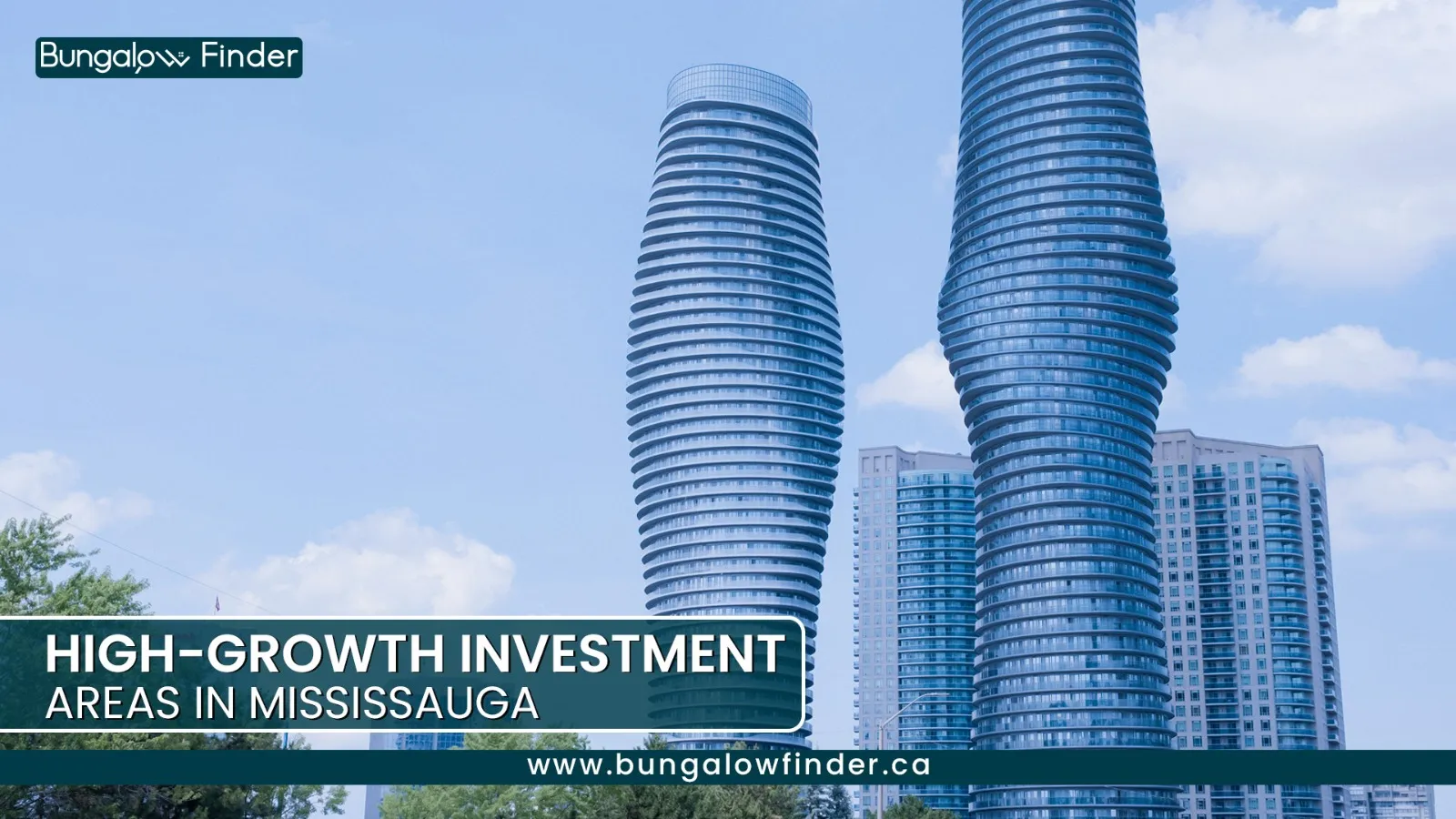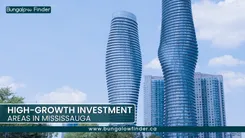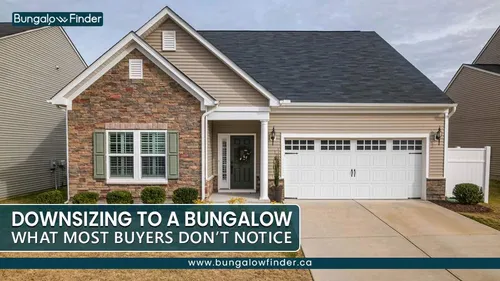Best Neighbourhoods to Buy a Home in Mississauga in 2025
Explore Mississauga’s top 5 neighbourhoods to buy in 2025. Learn price ranges, rental demand, and investment potential in Square One, Port Credit & more.

Mississauga’s housing market hasn’t cooled off the way some buyers hoped. The city keeps pulling demand because of jobs, schools, and location. Still, not every pocket makes sense. If you’re looking at Canadian homes for sale and want to zero in on Mississauga, these five neighbourhoods are the ones buyers and investors keep circling in 2025.
Why Mississauga Still Works
Mississauga used to be called a commuter town. Not anymore. It has its own business core, an airport, and some of the busiest shopping and transit hubs in Ontario. People who search “homes for sale Mississauga” aren’t only from the GTA. Many of them are new to Canada, and they land here because jobs and transit are already built in.
The Canadian housing market in 2025 is slower than the 2021 frenzy, but inventory is still tight. Mortgage rates keep buyers cautious, but demand isn’t gone. It just shifted. More listings are on the table, so picking the right neighbourhood matters more than chasing citywide averages.
To put numbers to it: the average home price in Mississauga sat around CAD 1,068,304 in 2024, according to the city’s Housing Needs Assessment. At the same time, average rents climbed 42% over seven years, a sign of long-term pressure. That’s why investors still circle Mississauga — values adjust, but demand hasn’t broken.
Mississauga’s Top Investment Pockets
Neighbourhood | Price Range (2025 est.) | Appeal |
Square One (Downtown) | $650K – $1.1M | Condos, rental demand, transit |
Port Credit | $1.2M – $2M+ | Waterfront, limited land, high-end buyers |
Erin Mills | $900K – $1.5M | Schools, parks, and stable family demand |
Meadowvale | $650K – $950K | Affordable entry point, rental yields |
Churchill Meadows | $850K – $1.2M | Modern homes, fast turnover |
These are ballpark numbers. Always check MLS for the latest sold prices — especially with rates shifting, things move every quarter.
1. Square One
Square One is the real downtown here. The mall, the condo towers, the bus terminal, and now the LRT running down Hurontario. It feels more like Toronto than anywhere else in Mississauga.
If you’re thinking of renting, this is your spot. Students at Sheridan, young professionals, and newcomers all look for condos here. Units don’t sit long. Even when the market slows, downtown condos still move.
The flip side is supply. Developers keep putting up towers. That means you need to pick carefully — good management, lower condo fees, solid layouts. Not every unit is equal.
With average monthly rent in Mississauga’s primary market at CAD 1,877 in 2024, it’s easy to see why downtown condos remain attractive. And in the secondary rental market, two-bedrooms in Peel average around CAD 2,674 — about 38% higher. That premium proves demand for centrally located, modern units isn’t easing.
2. Port Credit
Port Credit is different. You come here for the lake. The marina, restaurants, and small-town feel draw a completely different type of buyer. People pay for lifestyle, not just square footage.
It’s not cheap. Detached homes often cross $2M, and even townhomes run high. But the land is limited. That’s why values hold, even in downturns. For investors, that scarcity is the safety net.
The GO station is a bonus. Quick access to Toronto keeps the commuter demand alive. For buyers thinking long term — five, ten years — Port Credit rarely disappoints.
Rental numbers back this up. When secondary market tenants pay nearly $2,700 for a two-bedroom, high-end areas like Port Credit are exactly where those dollars flow. It’s expensive, but people pay for the lake lifestyle.
3. Erin Mills
Erin Mills is the definition of suburban Mississauga—detached homes with yards, strong school rankings, and plenty of parks. Families move here because it feels stable, and most don’t leave quickly.
That low turnover makes it predictable. If you want to buy a home that holds value and attracts family tenants, Erin Mills works. It’s not the fastest appreciating pocket, but it’s steady. In a housing market that swings, steady isn’t bad.
Prices run high, often in the million range, but compared to Toronto, you get size and community for the money. And with Mississauga’s long-standing vacancy rate of around 1–1.5% in the primary market, the odds of a home sitting empty here are slim.
4. Meadowvale
Meadowvale is where first-time buyers and investors look for value. Townhomes, semis, smaller detached houses. It’s cheaper than most of the city, which matters when interest rates are high.
For investors, that price point makes sense. Rents hold, vacancy is low, and yields often beat out pricier neighbourhoods. Families who aren’t ready to buy will rent here, and they stay longer because of parks, schools, and amenities.
You won’t get luxury or lake views, but you will get a property that pays its way. For many, that’s the more imaginative play. Average rents rising 42% over the past seven years only strengthen Meadowvale’s case as an affordable entry point with dependable income.
5. Churchill Meadows
Churchill Meadows is one of the newest neighbourhoods in Mississauga. Streets are clean, homes are modern, and schools are newer. Young families are the core buyer here.
Because the homes are newer, you don’t get the repair headaches you might face in older areas. And buyers want that. Listings often move fast. If you’re looking for new homes for sale in Mississauga, Churchill Meadows is where builders still deliver.
Prices aren’t low, but demand is steady. For investors thinking about long-term value and quick turnover, it’s a safe bet.
Market Updates in 2025
The real estate market in Canada looks calmer than in the peak years. Prices dipped from record highs, but immigration and job growth keep demand alive in cities like Mississauga.
Reports this summer showed more listings and slower sales. That’s not bad news for buyers. More choice means less bidding war pressure. Detached homes are still expensive, but condos and townhomes show openings.
In July 2025, GTA sales hit about 6,100 transactions through MLS®, a 10.9% jump from July 2024. But the average selling price, at CAD 1,051,719, was still down 5.5% yearly. That’s the mixed picture buyers face: more activity, but softer prices.
The Hurontario LRT will add more pressure around Square One and along Hurontario Street once it’s fully operational. Transit drives value. Same story with Port Credit — the GO line keeps it desirable.
Buying Tips That Actually Matter
Decide if you want income or appreciation. They’re not always the same.
For income, target Square One or Meadowvale, where rental pools are wide.
For appreciation, look at Port Credit or Churchill Meadow, where supply is tighter.
Erin Mills gives you stability if you want a safe, family-oriented demand.
Always check sold data from the past 60–90 days, not just list prices.
And one more: don’t chase hype. Buy a home that fits your finances first. Market timing only matters if you plan to flip quickly.
Conclusion
Mississauga is still one of the stronger cities in the Canadian housing market. It’s not uniform, though. Each neighbourhood plays a role: Square One gives you liquidity, Port Credit offers prestige and long-term growth, Erin Mills anchors you with stability, Meadowvale keeps you cash-flow positive, and Churchill Meadows gives you newness and family pull.
If you’re scanning MLS for homes for sale in Mississauga, don’t just look at what’s cheapest or newest. Match the pocket to your strategy. That’s how you get more than a house — you get an investment that lasts.













